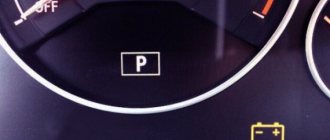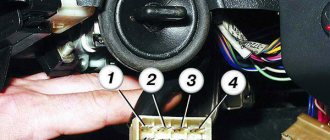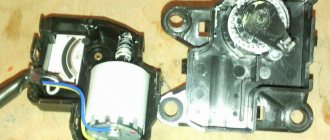Inexperienced car enthusiasts often ask how long it takes to charge the battery. This question cannot be answered unambiguously by naming a specific value in hours. In such a situation, much depends on the condition of the battery, its capacity, how worn it is, etc. Here it is important to know how to charge car batteries, how and in what situations they are used. And the charging time of the car battery will be determined depending on the condition of the battery. In order to find out the charging completion time, there are control methods, which will be discussed below.
How to set the battery charge level
Determining battery charge
To determine how charged the battery is, take into account its voltage. You can check this characteristic in two ways:
- Carry out the usual measurement of electrical voltage at the battery terminals. To do this, use a digital voltmeter. This device will allow you to show the exact value of the battery voltage level down to tenths and even hundredths of a volt. To measure, the discharge and charging current must be absent for 4-5 hours so that the voltage returns to a normal stable state. There should be a reading between 12.5 and 12.9 volts. Special chargers with a microprocessor and memory are useful. They allow you to more accurately determine the charge level. Such devices are capable of monitoring the discharge and charge of the battery over several cycles.
- The density of the electrolyte is determined, and this parameter is used to determine the degree of charge of the battery. But this option is only suitable for devices with liquid electrolyte.
Moving the battery to your home
It happens that a driver rarely drives a car in winter. In this case, experienced drivers strongly recommend removing the battery and storing it in a dry, warm room. The recommendation is supported by the fact that a non-working battery at low temperatures quickly deteriorates in its characteristics. Sometimes this even leads to irreversible damage to the battery.
During such storage, it is important not to forget to charge the battery at least once every 3 months. Then he will always be in “combat” readiness.
In conclusion, we emphasize: be attentive to the car and to yourself. Many unpleasant situations will not happen if you think about your safety in advance. Proper use of the battery will allow you to avoid malfunctions. Careful preparation of the car before a long journey will allow you to get to your intended destination without unnecessary incidents.
Happy road!
Timing
How long it takes to charge a 60 Ah car battery can be calculated using a special formula. To measure battery capacity, milliamps per hour or mAh is used. Information about its size is always indicated by manufacturers on the battery case. The charger always contains information about what generates the current of the device. This indicator is expressed in milliamps.
If you divide the battery capacity by the charging current of the charger, you get the time expressed in hours. But you also need to take into account charging efficiency. To determine the time more accurately, the division result should be multiplied by 1.4.
To calculate the time required to charge the battery, use the following formula:
Т=1.4C/I
In it:
- T is the time required to fully charge the battery. It is indicated on the device.
- C is the size of the battery capacity in milliamps per hour.
- I – charging charging current.
When making calculations, it is important to take into account that the time required to charge the battery is affected by its quality, correct formatting, and ambient temperature. This means that real data may differ by 20% from the calculation results.
How to charge a gel battery
Gel batteries are another type of modern battery that has advantages over traditional acid batteries (they are designated GEL). Basically, they are used as power supply for car multimedia systems and batteries for scooters, motorcycles, and ATVs. They can also be used in uninterruptible power supplies (UPS) for computers, gas boilers and other household appliances. The advantages of gel batteries include:
- high current output, even in low charge mode (about 20...30% of the nominal value);
- a large number of recharge cycles (up to one thousand or even more, depending on the specific model and operating conditions);
- minimum self-discharge current (this allows you to keep the battery in a charged state for a long time, even in unfavorable operating conditions for it, it can only lose about 20% of its charge per year!!!);
- The gel battery can be stored completely discharged even at negative ambient temperatures.
As for the disadvantages, gel batteries have only two of them:
- high price compared to traditional acid batteries with the same technical parameters;
- A gel battery really does not like increasing voltage (overcharging), and under such conditions its capacity is significantly reduced and the overall service life is reduced.
Many car enthusiasts who use such batteries are interested in the question of how to charge a gel battery? In fact, there are few differences from charging traditional batteries.
- For charging, a conventional charger is used with the ability to adjust the value of the current and voltage it produces.
- The current value is selected depending on the battery capacity. It should be 10% of it. For example, for a battery with a capacity of 60 Ah, the charging current should be 6 Amperes. In extreme cases, for example, if you need to charge the battery quickly, then it is allowed to take 30% of the capacity. That is, in our case it will be 18 Amperes.
- For a gel battery, it is important not to overdo it with the voltage value, that is, you should not set its value too high. As a rule, the limit value in this case will be 14.5...15 Volts (additional information should be checked on the sticker on the battery case).
- The maximum value of the permissible charging current is designated as max initial current . The charging current must not be allowed to increase above the corresponding value.
- The charging time of a gel battery depends on the charging current. To calculate it, you need to divide the capacitance value by the current value. If the current was chosen at 10% of the capacity, then the charging time will be the same 10 hours. If the current is lower, then the time will be longer. In order to exclude the possibility of overcharging (which is very harmful for a gel battery!) it is better to use special electronic chargers for this, which will automatically select both the charging current and the time period for this.
The reason that the battery is destroyed when the voltage increases is that under these conditions the gel, which acts as an electrolyte, begins to melt. And the higher the voltage, the stronger the melting. And the longer the time of excessive recharging, the worse it is for the electrolyte gel.
If the gel battery is serviceable, then it is necessary to unscrew the plugs from its cans (containers) so as not to create excess pressure inside it. The charger probes must be connected to the corresponding terminals on the battery (observing polarity). Next, you need to set the appropriate current and voltage values on the charger. As the battery charges, the voltage in it will increase. It should not be allowed to go beyond the cycle use . If this happens for a short time, then you need to reduce the current in order to reduce the voltage. Under such conditions, the battery can usually be fully charged in 10...12 hours.
Often the label will indicate a Standby Use , which indicates at what voltage the battery can be in standby mode. The manufacturer implies that the battery can be stored for a long time without recharging, but to maintain its performance without load, it must be periodically recharged with a low voltage. Typically this range is around 13.5...13.8 Volts. Failure to comply with this requirement will lead to irreversible consequences, in particular, rapid loss of battery capacity and rapid failure.
The optimal solution for charging a gel battery is to use special electronic chargers that will automatically control the value of the charging current and voltage, and, if necessary, limit them. In addition, such chargers select the charging mode based on the degree of discharge of the battery, as well as external factors such as ambient temperature. There are chargers on the market that are specifically designed to work with gel batteries. In particular, they have a temperature compensation function and a function for controlling the charging process in stages in automatic mode.
Please note that if a gel battery is installed on the machine, then it is imperative to periodically check the functionality of the voltage relay on the generator. If it fails, the battery can fail in literally a matter of hours. You can buy terminals with a relay regulator as additional protection.
Security measures
Before charging a car battery, you need to properly prepare it:
- First you need to remove condensation, oxide and dirt from the contact surface. To do this, just prepare a soda solution, moisten a rag in it and wipe the upper part - the contacts. Maintaining cleanliness is very important, since if the battery cover is unscrewed from the top, then during dismantling dirt will get inside, which can lead to damage and shorten the service life of the device.
- Open the caps and check the electrolyte level. If it is not enough, then the plates are not closed and distilled water is added. Otherwise, during charging, the lead plates will heat up and crumble. An ideal option would be to measure the density of electrolytes. This indicator, if the battery is normal and in working condition, should be 1.26-1.30 g/cm3.
- Unscrew or pull out the plugs from the battery using a screwdriver. They should be applied to the holes to prevent acid from splashing out. Thanks to this, the gases that will be formed in the process will freely escape.
After preparatory work, charging can be carried out. It is performed using direct current or constant voltage. How long the procedure will take depends on the type.
In order for the car to start again and the battery to remain in its original condition, you need to follow the following precautions:
- Do not charge with a frozen battery. You need to give it time to thaw.
- Monitor the current level. The best option is to use a current of 10% or 0.1 of the battery capacity. For example, if this indicator is 60 Ah, then the charge current should not exceed 6 amperes.
- The procedure can only be carried out in rooms that are well ventilated.
- If the battery is installed, the hood should be kept open during the procedure.
- It is necessary to ensure that the positive pole of the battery is connected to the same one of the charger. The same applies to negative ones.
- The battery should become infected until gas begins to actively form in all cells.
- In summer, the procedure should be carried out as soon as the charge level reaches 50%, and in winter - 25%.
The electrolyte density indicators must be monitored even after charging is complete. If in one cell the density is lower. This indicates that the battery is faulty and will need to be replaced.
At the end, you need to wait 20 minutes until the battery is cleared of gas, then screw it in and insert the plugs into place. It is also recommended to wash and dry the battery. To check whether the housing is passing voltage or not, you need to measure the voltage of the battery cover. If it is below zero, it means it is passing.
Is it possible to charge the battery in a car?
Many car enthusiasts, especially beginners, are interested in the question of whether it is possible to charge the battery without removing it from the car. It is important to separate concepts here. As for its physical removal (for example, moving it closer to the charger), charging can be carried out directly on its seat. However, if we are talking about disconnecting car terminals, then this must be done! You especially need to disconnect the negative terminal, although both are better. This is due to the fact that even in a situation where the engine is not started, the electric current from the battery still passes into the electrical system of the car, powering the corresponding elements.
Firstly, during charging, some of the electrical energy from the battery will go into the system. This will naturally increase charging time. Secondly, there is always a risk of a power surge or other similar troubles, which can negatively affect the condition of the elements of the car's electrical system. This is especially true for expensive cars (business and premium class), the design of which has a lot of built-in electronics. She will be at risk.
Charging time depending on battery type
There are two ways in which you can return the battery to working condition: constant current and constant voltage. The direct current method is used if the battery generator is of a maintenance-free and low-maintenance type. It is important to know how many amperes to supply to the terminals so as not to cause damage to the device.
Maintenance free view
The difference between maintenance-free calcium batteries is that they do not consume water or it is very low. In standard batteries, the decomposition of water into oxygen and hydrogen occurs when the voltage at the terminals reaches 14.4V.
For maintenance-free batteries this period is longer. Therefore, water consumption is significantly lower or almost zero. But this does not mean that such devices do not need recharging. The procedure is carried out in the same way as for other types of batteries and is not difficult even at home.
The need for charging is easy to determine. Most often this is obvious. For example, if the driver forgot to turn off the headlights or music and the battery died. Until the morning, in this case, the entire battery capacity will be depleted and the car will not be able to drive.
Recharging will be required in winter, since during periods of low temperature the stove and heating work and the battery does not restore its charge well. Therefore, maintenance-free devices need to be recharged just as much as other types.
Maintenance-free batteries are different in that they do not have direct access to the electrolyte banks, so they cannot be topped up. It is charged automatically by a constant voltage charger.
The maximum and minimum current levels are set independently as charging progresses.
Initially, using the regulator, a current equal to 1/10 of the capacitance is set. How long you need to charge the battery depends on how low it is. A few hours after the start of the procedure, the set current levels begin to automatically decrease so that the electrolyte does not boil. When it is fully charged, only 220mA will be supplied to the terminals. The battery and the charger connected to it can remain in this form for any period of time without danger.
If a maintenance-free battery is 90% discharged, it fails and cannot be restored to working condition using an automatic charger.
Interestingly, with the help of automatic charging you can recharge not only a maintenance-free battery, but also other types. But you must not allow the battery to drain completely.
Type served
To determine how long it will take to resuscitate such a battery, you need to take into account its features. In order for the procedure to be carried out without danger to the battery, the current should not exceed 10% of the battery capacity.
The boiling of the electrolyte indicates that the battery has received enough energy. On average, it takes about 12 hours for the battery to be fully charged.
To make the process move faster, some car enthusiasts prefer to increase the amperage. But this is not the best option, since high voltage will worsen the condition of the lead plates and significantly reduce the service life of the battery. This approach is especially harmful if the machine runs on a lead-antimony battery.
If the device is deeply discharged, then it is allowed to increase the amperage by no more than 5% of the capacity. The charging voltage should also be reduced within 12-13 volts. Gradually, the current will increase, but you need to ensure that it does not exceed 10% of the capacity, and the voltage level is up to 14.4 V. This is a slow method, since it will take 20 hours for the battery to be fully operational.
When to charge the battery
Before charging the battery, you must ensure that it is truly discharged. There are several ways to do this:
- Measuring voltage at terminals . This can be done using a constant voltage voltmeter, in other words, an electronic multimeter or a pointer tester. For standard batteries used in most passenger cars, the standard voltage value is 12 V. In practice, it differs slightly from the nominal value. So, a value equal to 12.7 V tells the car owner that the battery charge level is 100%, and accordingly, there is no need to charge it. If the measured voltage is 12.2 V, then this indicates that the charge level is approximately 50%. And if the voltage drops to 11.6...11.7 V, it means that the battery is almost completely discharged and it needs additional charging.
- Measuring the electrolyte density value . However, this verification method is only possible for so-called serviceable batteries, that is, in which it is possible to reach containers with electrolyte (and add it, if necessary). To measure density, a special device is used - a hydrometer. The electrolyte density should be around 1.27 g/cm³. If it is significantly less, it means that the battery should be charged with a charger. In unattended ones there is a special window where 3 stages of density will be displayed.
- Problems starting the engine . One of the reasons why the starter does not turn, and problems arise with starting the engine, is precisely the battery discharge. This is usually accompanied by problems in the operation of other consumers of electricity in the car - lighting, operation of the audio system, and so on.
In a discharged battery, sulfation of its lead plates occurs, which leads to a sharp decrease in its service life, that is, durability.
Charging the battery at constant current
DC battery charge graph
The process consists of several stages, but at each of them it is necessary to maintain a constant current strength, adjust it if necessary and measure the voltage. Therefore, this method is not very convenient. For it you will have to get a charger with adjustable current.
To find out how long a battery charges at constant current, you need to arm yourself with a multimeter and follow these steps:
- At the first stage, the current is set to 0.1 of the rated capacity of the battery. 60 Ah batteries are common in passenger cars. Therefore, they are set to 6 A at a current voltage of 14.4 volts. A multimeter will help you monitor these indicators.
- In the second stage, the voltage will gradually reach 14.4 V and the electrolysis of water will increase sharply. As a result of this process, oxygen and hydrogen are formed. Therefore, the charging current decreases by half or to 3A.
- At the third stage, the voltage level rises to 15V, so the current must be halved further to 1.5 A. It is important to check the voltage once every 2 hours. If it gives the same results, and active gas evolution is observed in the cells, the charge can be stopped.
With this method, it is quite difficult to determine how long it will take to charge the battery. It all depends on the degree of its discharge, age and degree of sulfation. These factors affect how well the battery will accept a charge. Over time, a layer of lead sulfate settles on the surface of the plates, causing the battery capacity to decrease. The lower it is, the faster the battery will become infected.
How to charge a hybrid battery
In hybrid batteries, one part of the plates is made using “antimony” technology, and the other is made using “calcium” technology (sometimes with the addition of silver). The battery is low maintenance, but it still has plugs. Accordingly, it is necessary to check the electrolyte level once every two to three months and, if necessary, add distilled water to it. Among the advantages, it is worth noting its resistance to deep discharge and the ability to produce high starting current. As for the price, it is acceptable, and approximately two times less than calcium.
As for the charging process, it is standard and not difficult. So, it is necessary to charge with a current whose value is 10...30% of the capacitance value. As mentioned above, for 60 Ah the current should be 6 Amperes (if you need to charge faster, you can increase it to 18 Amps). It would be optimal to set the current value to 2 Amperes. The voltage value will be in the range of 13.8...14.2 Volts. The charging end signal will be a voltage value of 14.2 Volts and a current value of 0.3...0.5 Amperes.
You cannot set high charging currents, otherwise the electrolyte will boil, which is extremely harmful for the battery plates; they heat up and the active mass may fall off from them.
A special feature of a hybrid battery is that in the summer it is necessary to regularly check the electrolyte level. This is due to the fact that, unlike its old “brothers”, such a battery produces a higher operating voltage. And if in winter this only helps to start the engine without problems, then in summer it turns into free energy. This is fraught with the fact that the electrolyte may boil and begin to evaporate, and the acid concentration increases. Because of this, the plates heat up and become exposed, thereby becoming damaged. Therefore, in the summer, in addition to recharging, it is necessary to monitor the electrolyte level in the hybrid battery banks.
Constant voltage charging
Charging the battery at constant voltage
How long a car battery can be charged from a charger also depends on the voltage. Using this method, it is constantly supplied to the battery terminals. The entire charging process will consist of equalizing the voltages at the battery terminals and the terminals of the charger.
This circuit is used if the charger is equipped with an automatic operating mode. The internal resistance of the battery gradually increases and the current decreases. If the current drops to 200mA, the process stops. After this, the battery can be left connected to the charger and when the charge decreases, the device will turn on and recharge it. This is a very convenient home method, since there is no need to control the process; the device will independently regulate charging.
In this case, we can assume approximately how long it will take to charge a car battery, depending on the amount of voltage supplied:
- If it reaches 14.4V, then within 24 hours the 12V battery will be charged to approximately 80%.
- At a voltage of 15V, the device will be charged 90% per day.
- If the voltage level reaches 16 volts, then the car battery will be fully charged.
It is very important to select the proper current level. If this is done incorrectly, the battery can be damaged.
To avoid a decrease in battery performance, manufacturers install protection on chargers, and they themselves reduce the current to a safe value.
Monitoring the battery charge level
When monitoring the battery voltage with a multimeter, as mentioned above, we get a rough idea of the state of charge. To find out exactly how charged the battery is, you should measure the density of the electrolyte. For this you will need a hydrometer.
The electrolyte density must be measured in all banks and the degree of charge assessed by the average value. The density in the jars should be approximately the same with minor deviations. You can read more about measuring electrolyte density in the article “What acid is in a car battery.”
Below you can see a table of battery charge correspondence to electrolyte density.
| Electrolyte density, g/cm. cube (+15 degrees Celsius) | Voltage, V (no load) | Voltage, V (with load 100 A) | Battery charge level, % | Electrolyte freezing temperature, gr. Celsius |
| 1,11 | 11,7 | 8,4 | 0 | -7 |
| 1,12 | 11,76 | 8,54 | 6 | -8 |
| 1,13 | 11,82 | 8,68 | 12,56 | -9 |
| 1,14 | 11,88 | 8,84 | 19 | -11 |
| 1,15 | 11,94 | 9 | 25 | -13 |
| 1,16 | 12 | 9,14 | 31 | -14 |
| 1,17 | 12,06 | 9,3 | 37,5 | -16 |
| 1,18 | 12,12 | 9,46 | 44 | -18 |
| 1,19 | 12,18 | 9,6 | 50 | -24 |
| 1,2 | 12,24 | 9,74 | 56 | -27 |
| 1,21 | 12,3 | 9,9 | 62,5 | -32 |
| 1,22 | 12,36 | 10,06 | 69 | -37 |
| 1,23 | 12,42 | 10,2 | 75 | -42 |
| 1,24 | 12,48 | 10,34 | 81 | -46 |
| 1,25 | 12,54 | 10,5 | 87,5 | -50 |
| 1,26 | 12,6 | 10,66 | 94 | -55 |
| 1,27 | 12,66 | 10,8 | 100 | -60 |
| Electrolyte density, g/cm. cube (+15 degrees Celsius) | Voltage, V (no load) | Voltage, V (with load 100 A) | Battery charge level, % | Electrolyte freezing temperature, gr. Celsius |
Now you have an idea of how long it takes to charge a car battery. And the specific time is already determined depending on the degree of charge of the battery and its condition. In conclusion, we can give a couple of recommendations.
DC charging is best used in case of severe battery discharge. This way it will acquire a more complete and uniform charge. Constant voltage charging is used with a small additional charge.
In addition, in the event of automatic shutdown of the charger, the battery can be left for storage in this mode. During idle time, due to leakage current, the battery will discharge and the internal resistance will drop. The charger will turn on and recharge the battery. As a result, you will have a fully charged battery at the ready.
Fast charging
If it is necessary to turn on the battery urgently, resort to accelerated charging. It helps to quickly restore the battery capacity, but you won’t be able to start the engine for a long time and will have to resort to the usual procedure.
For fast charging, devices have a Boost mode. If you turn it on, an increased level of current begins to flow. Thanks to this, the car battery will be in more or less working condition in 15-20 minutes.
If the charger does not have such a mode, but has a function for adjusting the current, then you can set the increased value yourself. But it is not advisable to choose indicators greater than 30% of the usual current. If this value is exceeded, the condition of the battery plates will deteriorate and the device will quickly fail.
Accelerated charging is not safe for the battery, so it is recommended to use it only in extreme cases, when you urgently need to start the car engine. After the trip, you should fully charge the battery in the required mode.
If you follow all the rules, the charging procedure is not difficult and will not harm the battery. This can be done without special skills and the help of professionals.
How to charge an AGM battery
New batteries made using AGM technology are confused by many car enthusiasts with gel batteries (denoted as GEL). In fact, these are two different types of batteries. One of the advantages of such batteries is high starting currents (up to 500...900 Amperes), which allows you to start any engine in cold weather without any problems. Another advantage of an AGM battery is faster charging (about three times faster). And it charges perfectly from a car generator. And its service life is 3...5 years longer than that of a conventional acid battery.
As for charging AGM batteries, there are three options. In particular:
- Charge, accumulation, storage . The charging process can be carried out directly on the car or using a charger. In this case, the voltage value will be in the range of 14.2...14.8 Volts (but not more than 15.2 Volts, you need to further clarify in the instructions), the current strength will be 10...30% of the capacitance value. Energy is accumulated after deep discharge. The voltage is similar - 14.2...14.8 Volts, and the current is 10% of the capacity (no more!). In storage mode (for example, long-term storage in a warehouse or garage), the charging voltage should be within 13.2...13.8 Volts, and the current value should be 5...10% of the capacity value.
- Charging and storage . This is the most common option and is recommended by most manufacturers. For charging, the voltage is 14.2...14.8 Volts, and the current is 10...30% of the capacity. For storage, the voltage will be 13.2…13.8 Volts.
- Loading . Some manufacturers do not indicate the storage mode, but only provide information about charging conditions. They are identical to those given above - the voltage is 14.2...14.8 Volts, and the current is 10...30% of the battery capacity.
A few words about chargers. As with gel batteries, current and voltage levels must be closely monitored. Therefore, it is advisable to purchase an electronic charging unit in advance, preferably with two modes. This will not only minimize the participation of the car owner in the charging process, but will also ensure safe and efficient charging. If you decide to buy a mechanical charger, you will need to manually carefully monitor and adjust the current and voltage values.
How to determine whether the battery is discharged or not?
The battery discharge is determined quite simply for direct and indirect reasons. But as a rule, the first signs are dim headlights and a sluggish starter. Among other things, there are the following reasons:
- inadequate operation of the alarm system, opening and closing the car with a delay, central locking actuators work every once in a while;
- when the engine is turned off, the radio is also turned off;
- The headlights and interior lighting dim, and the brightness of the light changes when the engine is running;
- when starting the engine, the starter initially catches, then stops turning, and then turns at normal speed;
- floating speed when warming up the internal combustion engine.
How to use the calculator
To find out how long it takes to charge your battery, you don’t need to go into the details of all the processes and calculation formulas, just use this calculator.
For online calculation you must fill in all three fields:
- In the “Nominal capacity” field, enter the capacity of the car battery being charged.
- In the “Degree of discharge” field, you can enter both the percentage calculated from the table and the voltage measured with a voltmeter.
- In the “Charging current” cell you need to indicate exactly what current you plan to charge the battery from the charger.
By clicking the “Calculate” button you will get the required time to fully charge the car battery.
Subscribe
to our channel in
Index.Zen
Even more useful tips in a convenient format
During the operation of any car battery, it is important to know how long the battery needs to be charged. It is also important to remember that the battery must be well prepared and not started in a hurry to avoid unpleasant consequences. It is known that there are potentially dangerous chemicals inside any battery. Careless handling of them can have a sad effect on both the car and its owner. Therefore, when asked about how long to charge a battery, it should be noted that high-quality and complete charging and preparation for it require a certain amount of time.
What current and how long does it take to charge a car battery?
The current is determined by the capacitive characteristics of the battery and is calculated individually. The labels of all batteries indicate the nominal capacity, indicating with what current the battery can be charged. The optimal charging parameter is about 10% of the battery capacity. If the battery is more than 3 years old or is severely discharged, then 0.5-1 Ampere should be added to this value.
If the starting current parameters are 650 Ah, then such a battery needs to be charged at 6 amperes, but on the condition that this is only a recharge.
If you need to quickly charge the battery, in emergency situations, you can select a value of 20 Amperes, while keeping the battery charged for no more than 5-6 hours, otherwise there is a risk of acid boiling over.











